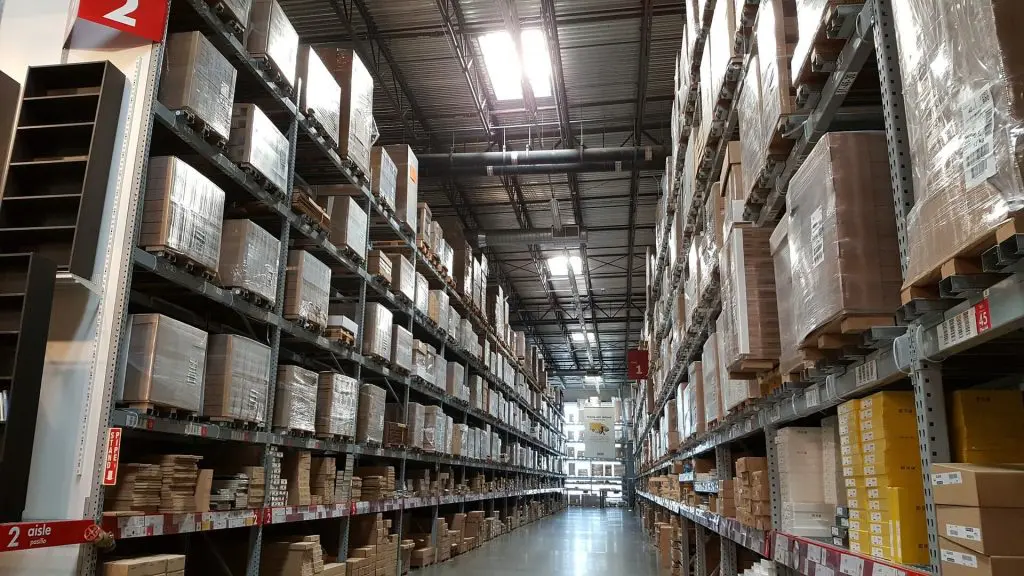Replenishment planning ensures that the correct amount of inventory is available when needed to be able to meet customer demand. This procedure includes several processes, including demand forecasting, calculating replenishment needs, and placing replenishment orders.
Replenishment planning is crucial for any business that deals with physical goods, as this will affect the efficiency, profitability, and customer satisfaction within your business. A company can be struck with a number of issues without proper replenishment planning processes set in place. These might include stockouts, overstocking, and inefficient stock replenishment, where business costs are higher and inventory turnover is lower. To enjoy the higher customer satisfaction, lower inventory costs, and higher profitability that come along with replenishment planning, keep on reading!
In this article, we will explore what replenishment planning is, how it works, and what its importance is. We will also look at some examples and scenarios of replenishment, the facets of planning and execution, the role AI and technology play in automating replenishment, the various factors that can influence demand forecasting, the strategies and best practices for effective planning, and the human factors to be considered in replenishment planning. Finally, we will discuss the possible complexities and obstacles of replenishment and how best to overcome them.
What is Replenishment Planning?
Replenishment planning is the overall process of forecasting, planning, and organizing the replenishment of inventory in the mid to long term. This involves supply planning with suppliers, capacity planning for production, financial planning, and the detection of risks related to supply disruptions or possible bottlenecks in the supply chain.
Replenishment planning provides the “big picture” for your continuous inventory replenishment process.
Examples and Scenarios of Replenishment
Based on the industry your company finds itself in, your replenishment planning strategy may vary. In retail, shelves need to be replenished with products that customers want to buy. Various factors need to be considered such as seasonality, promotions, sales history, and competitors’ offers. It also needs to coordinate with suppliers, distributors, and warehouses to ensure the goods are delivered punctually and accurately. Conversely, manufacturing needs to replenish any components, raw materials, and depleted goods needed for production schedule maintenance. Manufacturing companies need to look at demand forecasts, lead times, quality standards, and production capacity for their replenishment planning strategies, which also need to work in conjunction with suppliers, customers, and internal departments to guarantee efficient and smooth operations.
In the healthcare sector, providers need to replenish drugs, medical supplies, and equipment to provide quality care to their patients. In this case, the consideration factors for replenishment planning should include patient needs, availability, expiration dates, and safety regulations. It additionally needs to align with retailers, insurance companies, and regulators to ensure both cost-effectiveness and compliance.
Dimensions of Replenishment: Planning vs. Execution
Replenishment planning can be divided into two dimensions: planning and execution. Planning is the process of forecasting future demand and calculating replenishment needs. It involves the setting of parameters, analysis of data, and the application of models. Planning aims to establish when and how much inventory there should be to replenish. Secondly, execution is the process of implementing the replenishment plan and fulfilling inventory replenishment. It involves the placement of orders, receiving of goods, and keeping inventory records updated. Both planning and execution are important, as they complement each other and affect the overall performance. Direction comes from good planning and execution provides validation.
Automating Replenishment Planning
In our technology age, companies have begun to leverage artificial intelligence and machine learning tools, such as Intuendi, to help automate the replenishment planning process. This both automates and streamlines the collection, processing, storage, and communication of data, and additionally provides the algorithms and methods needed to be able to analyze, model, and optimize data. There are several software systems, tools, and methods that can be used to automate replenishment planning. Here are main tools:
- Enterprise Resource Planning (ERP): A system that integrates and manages the core business processes of an organization, such as accounting, finance, inventory, sales, purchasing, production, and distribution. ERP can provide a centralized and consistent source of data, as well as facilitate cross-functional coordination and collaboration.
- Warehouse Management System (WMS): A system that controls and optimizes the operations of a warehouse, such as packing, selecting, storing, and shipping goods. WMS can help automate replenishment planning by providing real-time control and visibility of inventory, as well as improving labor productivity and the use of space.
- Inventory Management System (IMS): A system that monitors and manages the inventory level and movement of goods, such as raw materials, components, finished goods, and spare parts. IMS provides accurate and timely information on inventory status and enables inventory optimization and replenishment automation.
- Demand Planning Software: Intuendi is a best-in-class example of AI-driven demand planning software.
Replenishment systems generally function by following a step-by-step workflow. Step 1, data collection, leverages the system to collect and consolidate data from various sources, such as sales orders, purchase orders, inventory records, and demand forecasts. Step 2, data analysis, uses the system to analyze and process the data using various algorithms and methods, such as statistical, mathematical, or machine learning models. Step 3, data output, is enacted by the system outputting and communicating the data in a useful and actionable form, such as replenishment recommendations, orders, or alerts.
Demand Forecasting and Influencing Factors
Demand forecasting is an essential part of replenishment planning, as it determines when to replenish inventory and how much to order. To leverage demand forecasting at its optimum ability, it is of utmost importance that you are made aware of its various influencing factors. The past sales of a product or service can provide a baseline for demand forecasting, as it reflects the actual customer behavior and preferences. Historical data of other variables may affect the demand for a product or service, such as promotion, price, competition, weather, season, etc. On the topic of seasons in demand forecasting, seasonality is an important influencing factor for demand forecasting, as various holidays, festivals, and seasons may influence the demand to increase or decrease during that specific time of year. Trends and events may also influence demand, as specific occurrences may affect widespread change and preference.
Demand forecasting is not a once-off process, but rather a continuous, dynamic process that needs to often be updated and revised. This is because the demand for a product or service can be unpredictable and can change rapidly, influenced by various internal and external factors. Therefore, replenishment planning should remain flexible and reactive to ever-changing demand conditions.
In the case of large catalogs and various sales channels, advanced demand forecasting techniques become impossible to do on a simple spreadsheet and demand forecasting software becomes essential.
Tips and Best Practices for Effective Planning
There is no need to be alarmed by the rush of information that has flown your way, or to feel overwhelmed or intimated by implementing replenishment planning practices into the everyday workings of your company. We have devised a list of best tips and practices for how you can improve your replenishment planning strategy:
- Managing supplier lead times: Lead time is the time between placing an order and receiving the goods. It can vary according to the supplier, the quantity, the product, the location, etc. Replenishment planning should consider the lead time of each supplier and product, and plan accordingly to avoid any shortages or delays.
- Setting realistic service levels: Service level is the percentage of customer demand that is being met by the available inventory. It varies depending on the product, the market, the customer, etc. Replenishment planning should set an achievable, realistic service level for each product and customer, and balance it with the inventory risks and costs.
- Avoiding stock obsolescence: Obsolescence is the loss of value or usefulness of a product due to aging, expiration, or fluctuation in demand, potentially resulting in loss, waste, or inventory write-off. Replenishment planning should avoid stock obsolescence by monitoring expiration dates, shelf lives, and demand trends of each product, and adjusting the inventory level and replenishment cycle accordingly.
- Considering the product life cycle: The product life cycle is the stages that a product goes through from introduction to decline. It can affect the profitability, demand, price, and competition of a product. Replenishment planning should consider the life cycle of each product, and make adaptations to replenishment strategies and tactics accordingly.
The Human Element in Replenishment Planning
Replenishment planning is not and cannot only be restricted to a mathematical process involving data and algorithms. It is a human process which relies on one’s observations and insights. Furthermore, a company should always be striving to increase its rates of customer satisfaction, and thus calls for a very real and human element to be included in its replenishment planning. There are both quantitative and qualitative factors to consider with the human element of replenishment planning:
- The significance of market observations and insights: Humans have access to unique knowledge that they gain from observing customer behavior and understanding the current market conditions. They can use this knowledge to provide valuable input for demand forecasting and replenishment planning. In particular, they can reveal the hidden or emerging trends and opportunities that have yet to be captured in data. For example, a person may notice when a specific product begins to sell well during a certain season and make adjustments to the replenishment plan accordingly.
- How people can influence forecasts and planning: People are capable of influencing forecasts and planning in ways that are inaccessible to AI. They do this by providing feedback and suggestions, making decisions and judgments, taking action, and adopting behaviors.
Challenges and Complexities of Replenishment
The task of replenishment planning is never quite simple. It is one that sees many challenges and complexities, with the main challenge being the balancing of stock levels, demand, and delivery times to avoid over or understocking. High inventory holding costs and waste result from overstocking, and on the other hand, understocking leads to lost sales, customer dissatisfaction, and a consequently damaged reputation. To maintain this crucial balance, a business must have accurate and timely information concerning its demand, inventory, and supply chain. Replenishment planning should always factor in strategies for prompt market change responses. A business with a flexible replenishment system will be able to adapt to these changing conditions while providing timely feedback and alerts.
Any business that endeavors to optimize its performance by improving its inventory management will understand just how vital the replenishment planning process is. By utilizing the best practices and strategies mentioned in this article, and by employing available technology and AI tools to assist in their replenishment optimization process, a business can conquer the complex task of replenishment planning to achieve its goals.
If you are interested in seeing how demand planning tools like Intuendi can assist in mid to long-term replenishment planning download our free eBook.







